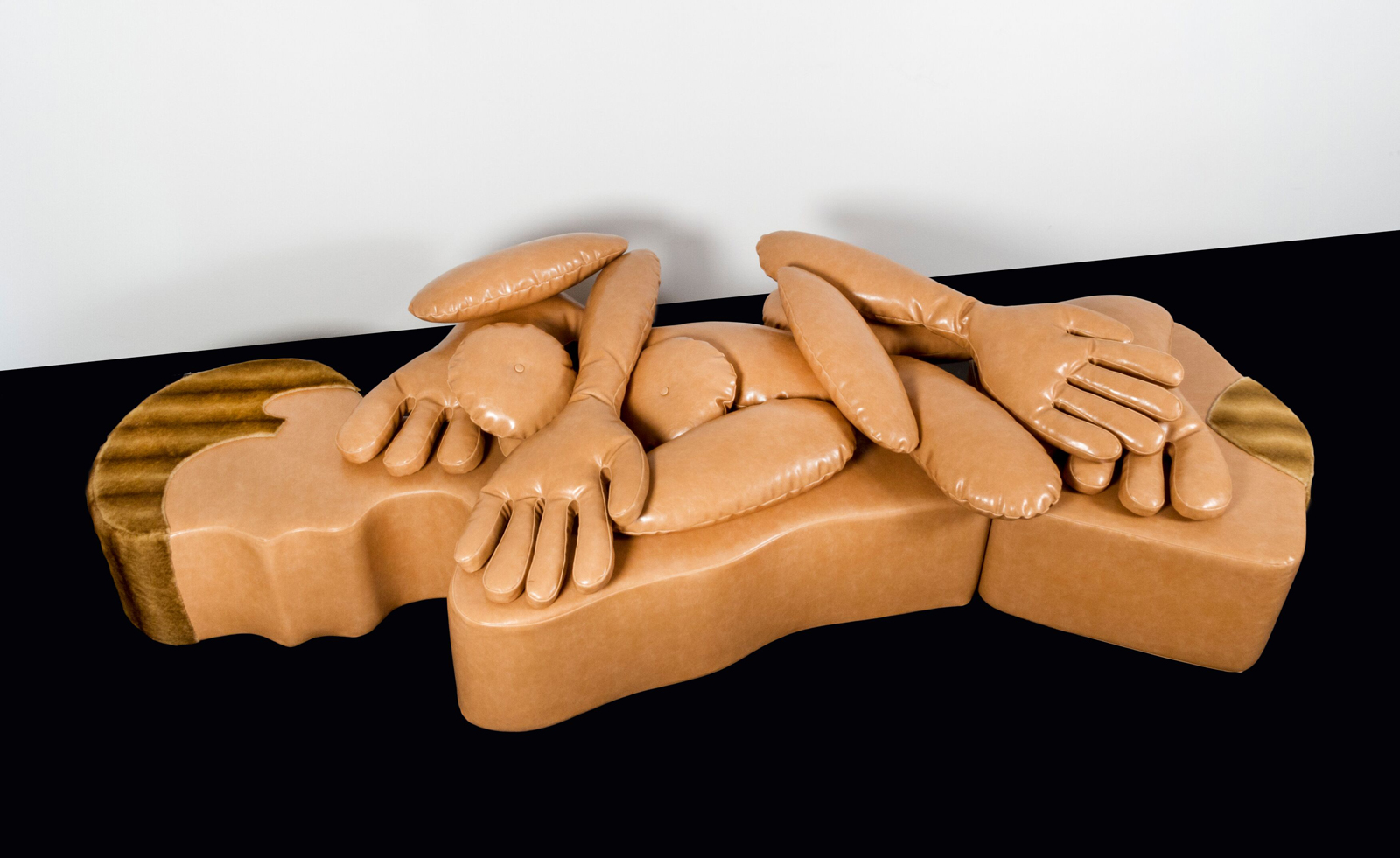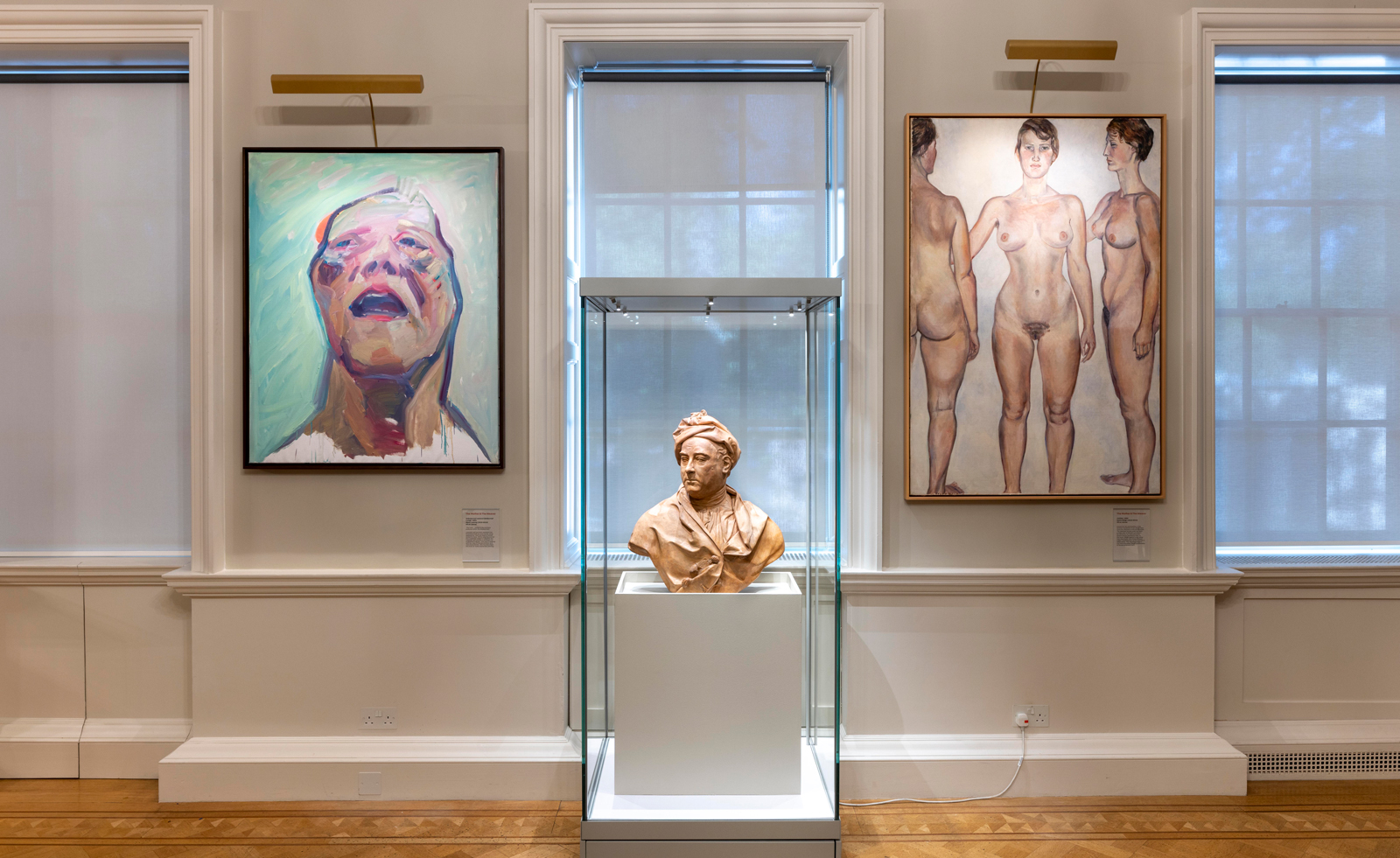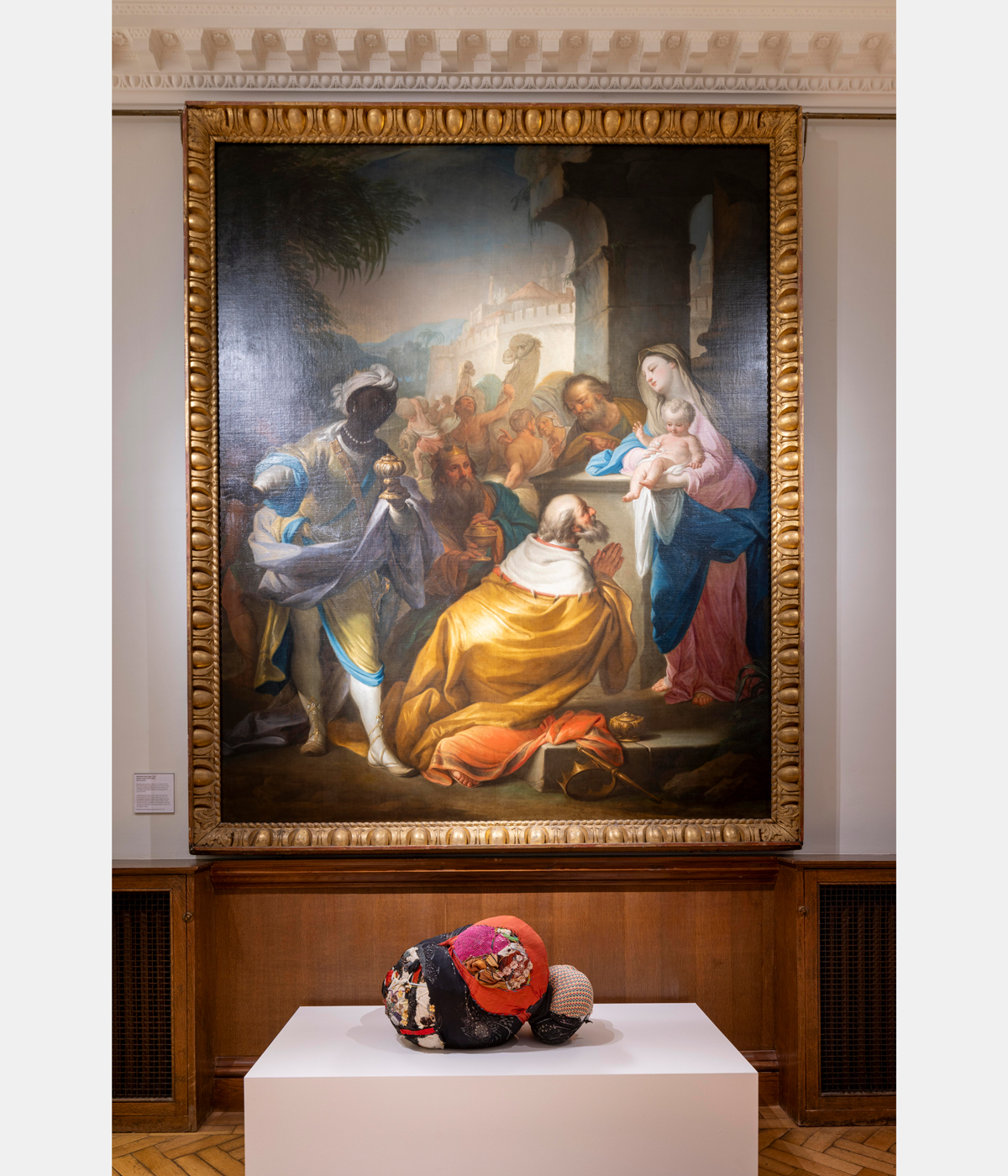Don’t miss: ‘The Mother & The Weaver’ dissects the complexity of motherhood
‘The Mother & The Weaver’ at the Foundling Museum, London, looks at the complex role of the mother in art from the Ursula Hauser Collection

The mother is an apt figure for London’s Foundling Museum to consider: present, absent or suffocating, the mother’s role can spin a web of tendrils extending into love, sexuality and identity for her offspring.
It is a subject that has long fascinated artists including, notably, Louise Bourgeois, whose well-known spider image inspires the name of this exhibition, ‘The Mother and the Weaver’. Her work is the main focus in this curation from the Ursula Hauser collection, which unites over 40 pieces from women artists, encompassing Lorna Simpson, Rita Ackermann, Ida Applebroog, Sheila Hicks, Berlinde de Bruyckere, Maria Lassnig, Marlene Dumas, Sonia Gomes, Luchita Hurtado, Nicola L, Anna Maria Maiolino, Carol Rama, Pipilotti Rist, Amy Sherald, Sylvia Sleigh and Alina Szapocznikow.
Here, curator Tanya Barson discusses the way artists have explored this dichotomy between the private and the public in the artists on show here.
Inside ‘The Mother and the Weaver’ at the Foundling Museum

Installation view, ‘The Mother & The Weaver: Art from the Ursula Hauser Collection’, 2023. Maria Lassnig, Selbstportrait weinend (Selfportrait crying), 1994. Sylvia Sleigh, Untitled, 1960.
Wallpaper*: How do you explore the multi-faceted role of the mother, absent or present, in this exhibition?
Tanya Barson: The exhibition aims to address the role and representation of the mother and motherhood in a very broad sense. It is a fundamental experience in life. While we don’t all experience being mothers, we all have mothers whether they are present in our lives or not. The artists in this exhibition address the spectrum of experience of our mothers and of being mothers. They tell us about their own deeply personal experiences, of motherhood, birth, their own childhood, or having children and their relationships to parenting and with their own parents, and they don’t sugar-coat it. They are candid about the messiness of life, about its complexities and the profound paradoxes that arise in our emotional lives. Society, and art history, have tended to portray motherhood in moral terms of black and white, of ideal motherhood and of failure and condemnation, while these artists express the grey areas.

Louise Bourgeois, The Good Mother, 1999
W*: What was important to consider in the curation of the artists included here?
TB: I selected works by women artists from the Ursula Hauser Collection, which has a history of engaging with female perspectives – both of the artists, their subjects and the collector.
Wallpaper* Newsletter
Receive our daily digest of inspiration, escapism and design stories from around the world direct to your inbox.
They have also been selected because of the way they address wider concerns with the representation of the female body, which is a related theme here, including modes of self-representation by female artists, or the complexities of gender identity. Underpinning the work is also an examination of the thematics of care – very much a priority across society as well as in the art context – leading to questions such as what does care entail; who cares for whom; and what are the experiences of care or its absence that define our lives? The artists have been chosen for their frankness about things such as anxiety, loss, dependence, ambivalence, vulnerability and, conversely, strength, love and resilience.
What’s important in this group of artists is that they address complex or difficult aspects of human experience non-verbally, and yet in ways that are themselves complex and multi-layered. That is to say, without closing down the possibilities but opening up to a range of responses. The museum is a complex and emotive space and its many different audiences and visitors should be able to experience these extraordinary artworks on their own terms. The fact that artists use their own individual languages means that each viewer can encounter them without needing translation. They speak for themselves.

Louise Bourgeois, The Birth, 2007
W*: What can visitors look forward to from this exhibition?
TB: The exhibition includes a selection of exceptional works by artists of the first order. Works that are in turns fierce or timid, full of sorrow or hope, pain or joy. Some of the artists are widely acclaimed, while others may be discoveries to the visitors. What is perhaps most special is to view these works in dialogue with the museum, its collection, its history and the setting it affords.
‘The Mother & The Weaver: Art from the Ursula Hauser Collection’ at the Foundling Museum until 18 February 2024

Hannah Silver is the Art, Culture, Watches & Jewellery Editor of Wallpaper*. Since joining in 2019, she has overseen offbeat design trends and in-depth profiles, and written extensively across the worlds of culture and luxury. She enjoys meeting artists and designers, viewing exhibitions and conducting interviews on her frequent travels.
-
 Warp Records announces its first event in over a decade at the Barbican
Warp Records announces its first event in over a decade at the Barbican‘A Warp Happening,' landing 14 June, is guaranteed to be an epic day out
By Tianna Williams
-
 Cure your ‘beauty burnout’ with Kindred Black’s artisanal glassware
Cure your ‘beauty burnout’ with Kindred Black’s artisanal glasswareDoes a cure for ‘beauty burnout’ lie in bespoke design? The founders of Kindred Black think so. Here, they talk Wallpaper* through the brand’s latest made-to-order venture
By India Birgitta Jarvis
-
 The UK AIDS Memorial Quilt will be shown at Tate Modern
The UK AIDS Memorial Quilt will be shown at Tate ModernThe 42-panel quilt, which commemorates those affected by HIV and AIDS, will be displayed in Tate Modern’s Turbine Hall in June 2025
By Anna Solomon
-
 The UK AIDS Memorial Quilt will be shown at Tate Modern
The UK AIDS Memorial Quilt will be shown at Tate ModernThe 42-panel quilt, which commemorates those affected by HIV and AIDS, will be displayed in Tate Modern’s Turbine Hall in June 2025
By Anna Solomon
-
 ‘Humour is foundational’: artist Ella Kruglyanskaya on painting as a ‘highly questionable’ pursuit
‘Humour is foundational’: artist Ella Kruglyanskaya on painting as a ‘highly questionable’ pursuitElla Kruglyanskaya’s exhibition, ‘Shadows’ at Thomas Dane Gallery, is the first in a series of three this year, with openings in Basel and New York to follow
By Hannah Silver
-
 Artist Qualeasha Wood explores the digital glitch to weave stories of the Black female experience
Artist Qualeasha Wood explores the digital glitch to weave stories of the Black female experienceIn ‘Malware’, her new London exhibition at Pippy Houldsworth Gallery, the American artist’s tapestries, tuftings and videos delve into the world of internet malfunction
By Hannah Silver
-
 Ed Atkins confronts death at Tate Britain
Ed Atkins confronts death at Tate BritainIn his new London exhibition, the artist prods at the limits of existence through digital and physical works, including a film starring Toby Jones
By Emily Steer
-
 Tom Wesselmann’s 'Up Close' and the anatomy of desire
Tom Wesselmann’s 'Up Close' and the anatomy of desireIn a new exhibition currently on show at Almine Rech in London, Tom Wesselmann challenges the limits of figurative painting
By Sam Moore
-
 A major Frida Kahlo exhibition is coming to the Tate Modern next year
A major Frida Kahlo exhibition is coming to the Tate Modern next yearTate’s 2026 programme includes 'Frida: The Making of an Icon', which will trace the professional and personal life of countercultural figurehead Frida Kahlo
By Anna Solomon
-
 A portrait of the artist: Sotheby’s puts Grayson Perry in the spotlight
A portrait of the artist: Sotheby’s puts Grayson Perry in the spotlightFor more than a decade, photographer Richard Ansett has made Grayson Perry his muse. Now Sotheby’s is staging a selling exhibition of their work
By Hannah Silver
-
 Celia Paul's colony of ghostly apparitions haunts Victoria Miro
Celia Paul's colony of ghostly apparitions haunts Victoria MiroEerie and elegiac new London exhibition ‘Celia Paul: Colony of Ghosts’ is on show at Victoria Miro until 17 April
By Hannah Hutchings-Georgiou